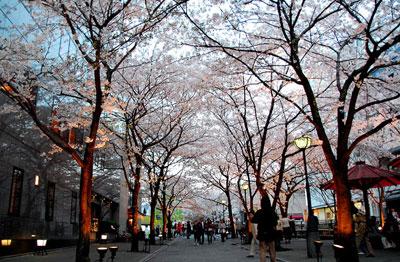Source: jnto.jp
02-01-2008 10:38
Tokyo

Tokyo consists of the southwestern part of the Kanto Region, the Izu Islands, and the Ogasawara islands. The population is one of the largest in the world. It is the Capital of Japan where over 11 million people live. Since Shogun Tokugawa Ieyasu established a government in the early 17th century, the town started to develop, spreading around his resident Edo Castle. Although most of the city was devastated by the Great Earthquake of 1923 and again by the bombing in the WWII, it achieved rapid restoration both times.
Tokyo is not only the center of politics and economy of Japan, but also developed as the center of world economy and culture, and it offers a number of must-see places.
There are large scale downtown areas including the Ginza where all famous shops around the world stand side by side, Shijuku high-rise complex and its surroundings that never sleep, Asakusa with reminiscences of the traditional Edo(former name of Tokyo), and Shibuya that starts the trend for the young people as well as unique areas including the computer town Akihabara where electric shops are densely competing and attracting many shoppers from Japan and overseas and the Tsukiji open-air wholesale food market that serves all consumers in Japan.
Kyoto
Kyoto stretches from southeast to northwest in the central and northern Kansai Region (Midwest Japan). It has three geographical features, the saw-toothed coast area around the Maizuru Bay in the northwest, the Tamba Mountains around the center and the Kyoto Basin in the southeast.
Kyoto became the capital of Japan in the 8th century. It had flourished as the center for Japanese politics, economy and culture for some 1,200 years until the capital functions were transferred to Tokyo in the mid 19th century. There remain many temples and shrines that had been built during this long period. Seventeen historic sites including the Kiyomizu-dera Temple and the Nijo-jo Castle are designated as World Cultural Heritage sites.
You may meet Maiko, young dancing entertainers who walk in long hanging sleeved kimono in the Gion, see the townscape characterized with popular 19th century style latticework, and visit the Nishijin where they weave traditional nishijin-ori textiles with vivid colored threads. The festivals are famous not only in Japan but are known worldwide. The three major festivals of Kyoto are Aoi-Matsuri Festival in early summer, Gion-Matsuri Festival in summer and Jidai-Matsuri Festival in autumn. There is also the Okuribi in five hills of Daimonji, where torches shaping a letter or figure are ignited into flames on the night of August 15, in a Buddhist ritual called O-bon or Urabon-e.
Mt. Fuji
Mt. Fuji is 3,776m high and is the highest mountain in Japan situated at the border of southeastern Yamanashi and Shizuoka. With its unrivaled magnificence and beautiful conic shape, Mt. Fuji has often been selected as the subject for paintings and literature. It is the world famous symbol of Japan.
At the foot of Mt. Fuji, there are the Five Lakes of Fuji, the Aoki-ga-hara Sea of Forest that is dark even during the day, as well as Kitaguchi-Hongu Fuji-Sengen Shrine that was constructed to calm the eruption of Mt. Fuji. The Fire Festival of Yoshida, held at the end of the year as a ritual of closing the climbing season for Mt. Fuji, is one of the three most peculiar festivals in Japan.
Mt. Fuji has long been the center for the mountain worship of ancient Japan. Today, it is a popular mountain to climb, and many people climb Mt. Fuji to watch the sunrise called Goraiko from the top. The access to the 5th station is well maintained, so you can go up to this point and thoroughly enjoy the magnificence of Mt. Fuji by just looking at the beautiful scenery close at hand without endeavoring to climb all the way to the top.
